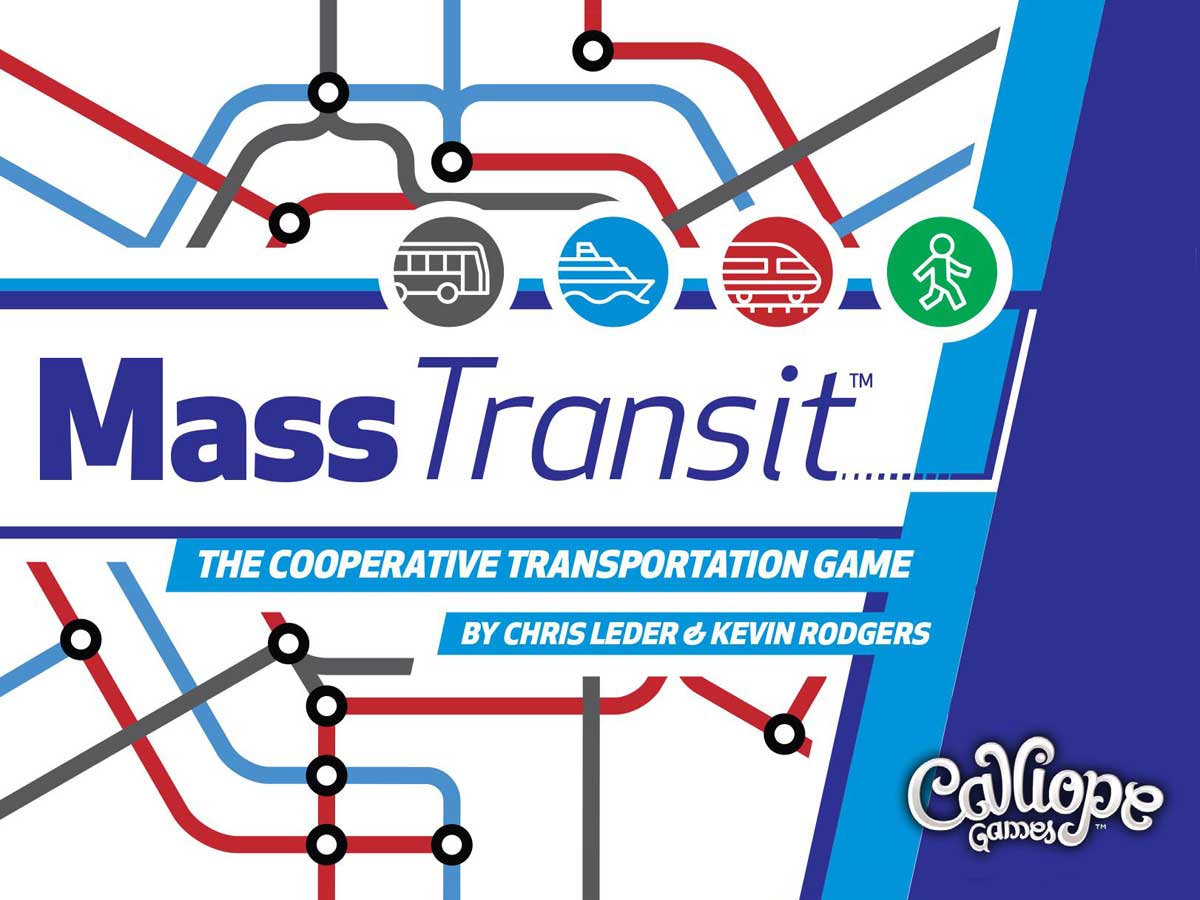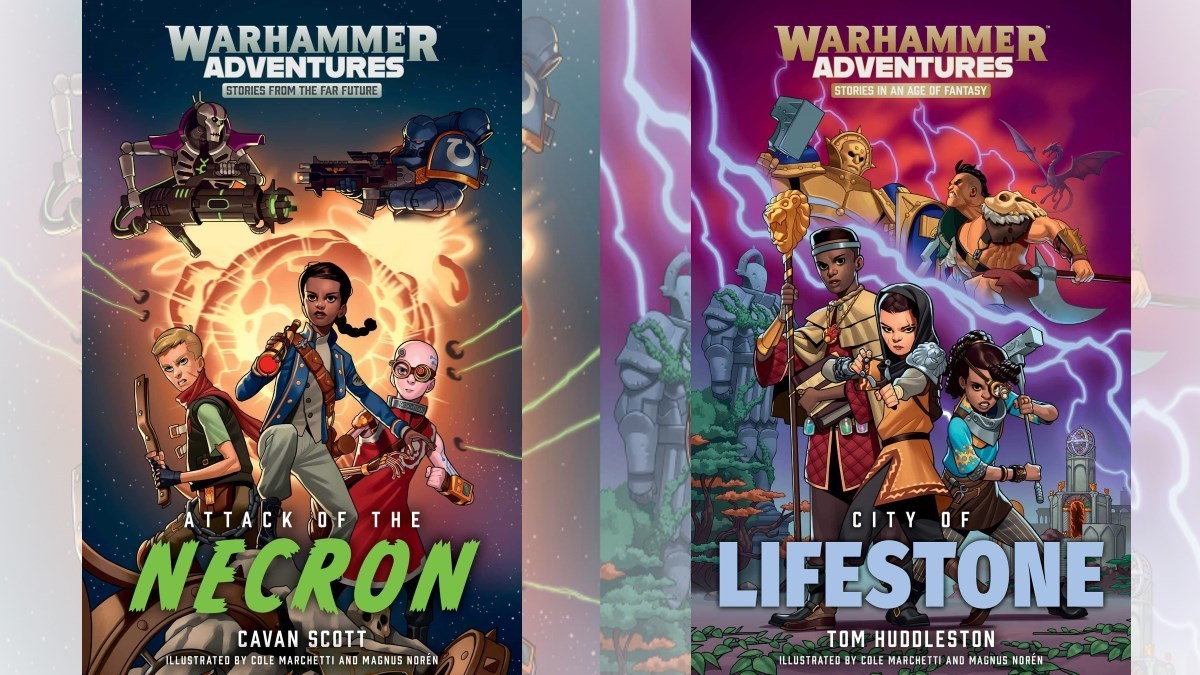The commuters need a way to get home—help build a Mass Transit system to send everyone where they need to go!
What Is Mass Transit?
Mass Transit is a cooperative card game for 1 to 6 players, ages 8 and up, and takes about 20 minutes to play. It’s currently seeking funding on Kickstarter, with a pledge level of $15 for a copy of the game. It’s part of the Calliope Game Night Extravaganza, which also includes two other games—Enchanted Plumes and Allegory—and you can get all three for a $40 pledge. I’ve played with my 7-year-old and the rules were easy for her to pick up, though actually winning the game was still a challenge.
Mass Transit was designed by Chris Leder and Kevin Rodgers and published by Calliope Games, with art direction by Andy Hepworth and graphic design by Mark Quire.
New to Kickstarter? Check out our crowdfunding primer.
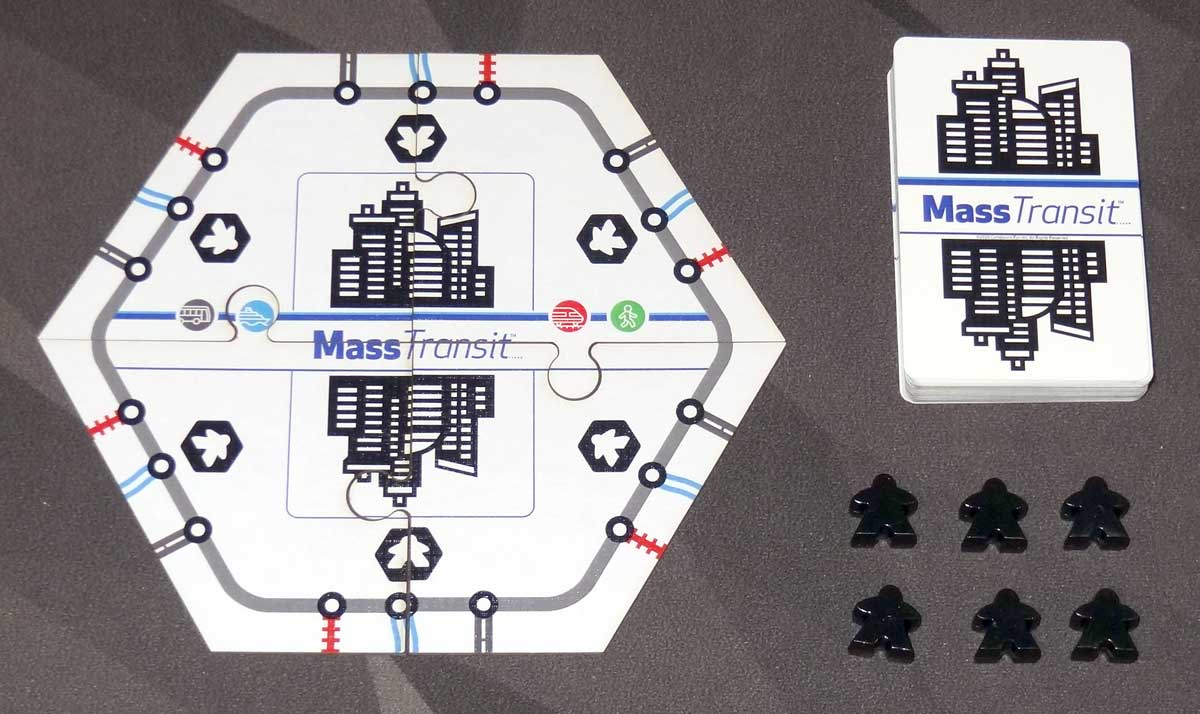
Mass Transit Components
Note: My review is based on a prototype copy and Tabletop Simulator, so it is subject to change and may not reflect final component quality.
Here’s what comes in the game:
- Big City board
- 6 Commuter meeples
- 52 Mass Transit cards
The board in the prototype is four pieces that fit together like a puzzle; the final board will probably be the same, though this is still being decided. I liked the puzzle because it meant that the game will fit in a smaller box than if it were a single piece, but it also lays flat without any fold lines—small boards sometimes don’t lay all the way flat because there’s not enough board weight to keep them down. This seems like a good solution.
The board and the cards have lines that represent the three types of mass transit: grey for buses, blue for ferries, and red for trains. The the icons are simple and easy to identify, and designed to look like a public transit map.
Even though the game is a pretty small package overall, you’ll need a good amount of table space to play it because the routes extend out from the Big City like spokes, so it can get pretty wide.
How to Play Mass Transit
You can download a copy of the rulebook here. You can also try it out on Tabletop Simulator.
The Goal
The goal of the game is to get all six commuters to their homes in the suburbs.
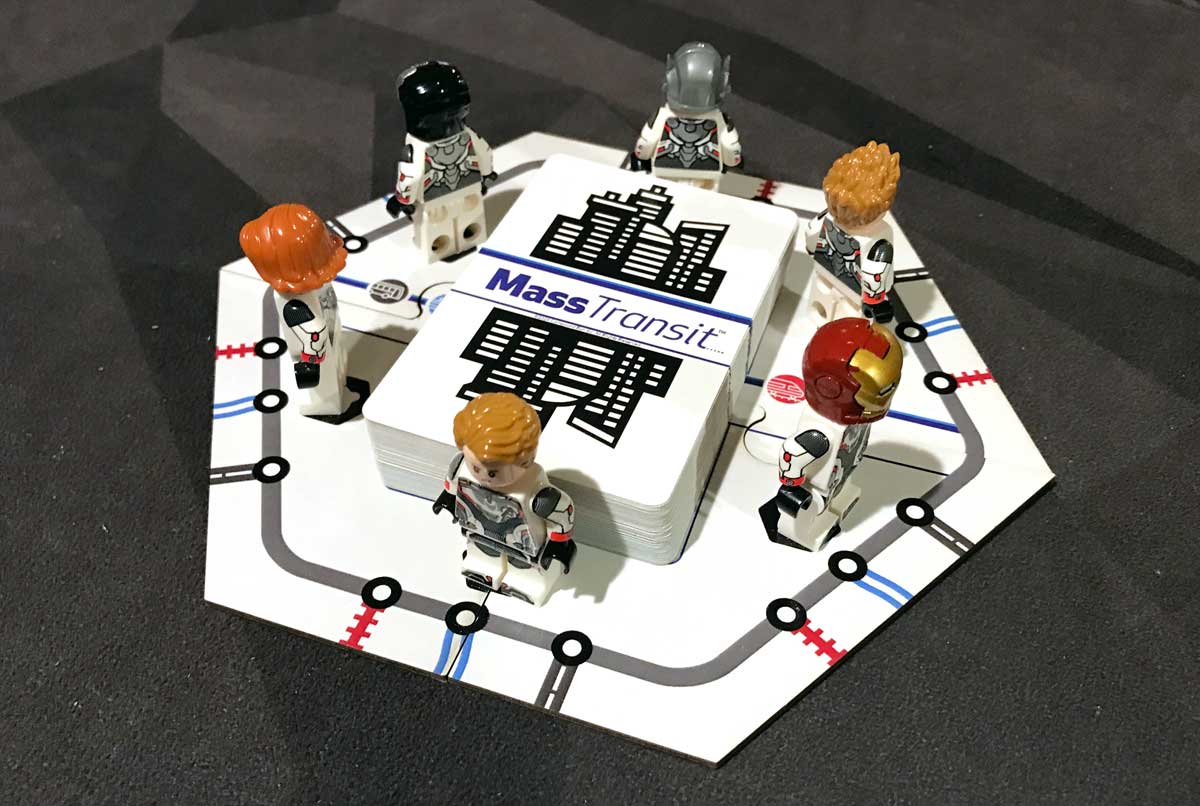
Setup
Place the board in the center of the table with a commuter on each spot around the edge. Shuffle the cards and deal 4 to each player, and then set the deck in the center. (Note: if any player has 3 or more suburbs—showing the end of a track and a house—in their hand, they draw four new cards and shuffle their original hand back into the deck.)
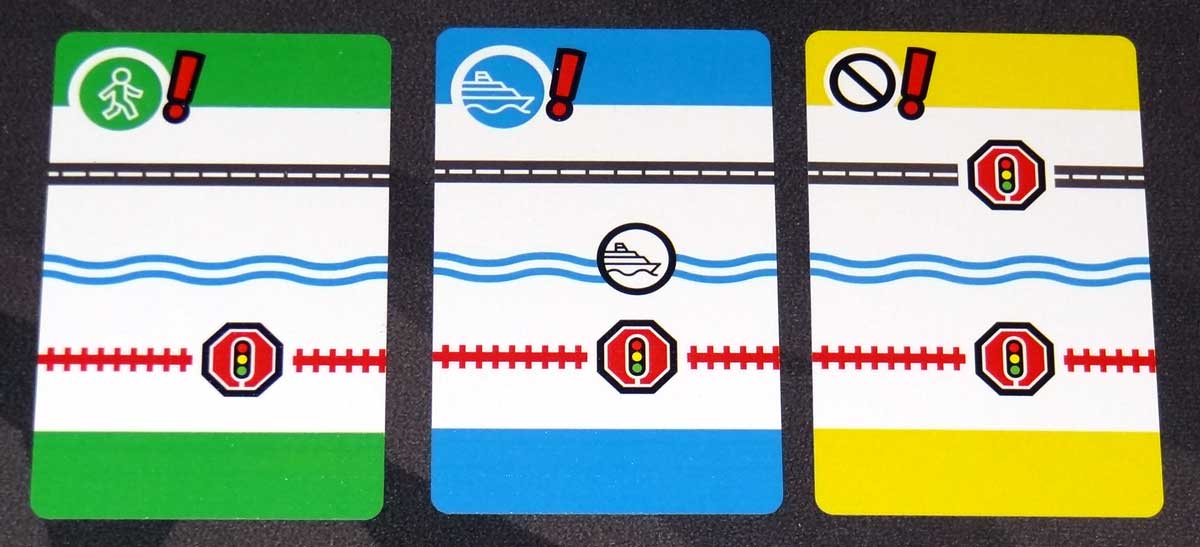
Gameplay
On your turn, you must play at least 2 cards from your hand, though you may play more than that if you wish. You also must play any cards that have the exclamation point on them during your turn, but they do not have to be played first.
Cards are played either to extend a route or to move a commuter.
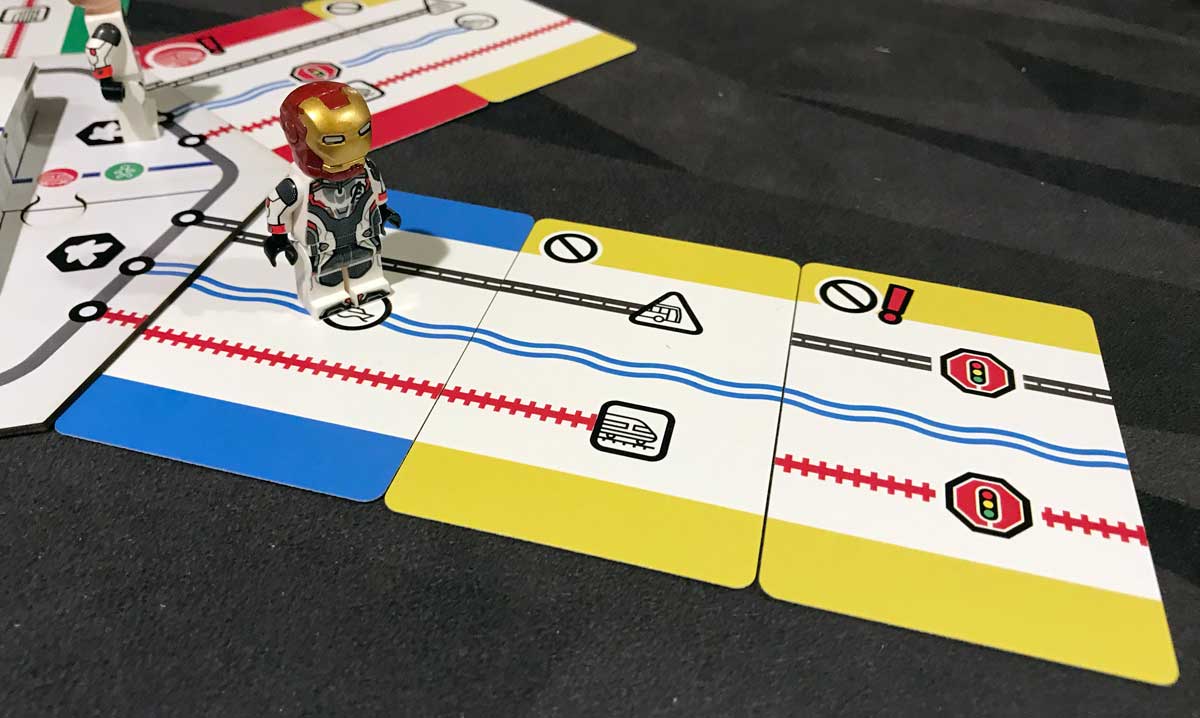
To extend a route, simply place it at the end of the row of cards extending from the Big City (or directly next to the Big City if the route has not been started yet). Depending on the card, it may extend the lines, slow them down, add stops, or even interrupt the lines entirely.

There are 6 suburb cards in the deck, each showing the end of a line (bus, ferry, or train) and a house. There’s also a number indicating the minimum distance from the Big City—there must be at least that many cards between the Big City and the suburb in order to play it. Once a suburb has been played, that route can no longer be extended.

To play a card to move, discard it to move one commuter using that mode of transportation. Aside from the grey bus, blue ferry, and red train cards, there are also green walk cards. Walking allows a commuter to move from one card to the next card, and they’re also the only way to move from the Big City onto the first card of a route. (Yellow cards, with a “no” icon them, cannot be used for moving commuters and can only be used to extend routes.)

Playing a transit type card will move a commuter from that type of station to the next point on that line—but the commuter must already be on a card with that type of station on it, and there must be another spot to move to on that line. If the commuter ends on another station, they can move to other stations on the same card for free or stay on the same mode of transportation, or you can even use walk cards to move them to the next card. There are also some cards with a stop sign/traffic light icon—these represent slowdowns in traffic, so the commuter has to stop on these spots, but they’re still in transit and cannot switch lines at those spots.
Communication is limited, representing the red tape and bureaucracy that urban planners have to deal with. You’re not allowed to say where you’re planning to play cards next, nor are you allowed to say what is in your hand. The rules do allow you to make vague statements, though it’s not always clear to me exactly what’s permitted.

Game End
If on any turn a player is unable to play at least 2 cards from their hand or if they have exclamation point cards that they cannot play, the players lose. (If the deck runs out, players continue taking turns as usual, but without drawing cards to refill their hands.)
If all 6 commuters make it home, then the players win.
Why You Should Play Mass Transit
Mass Transit looks pretty simple at first: play cards on the routes, use cards to move commuters along the lines to get them home. There are two of each type of suburbs: bus, ferry, and train. So your ideal setup is one in which there are two of each station right next to the Big City, uninterrupted lines (with no additional stops or stations) that match up with the suburbs. Then, you need one “walk” card per commuter, one movement along that particular mode of transit, and everyone’s home.
Easy, right?
Not so fast. Rush hour traffic slows you down and makes you spend more cards for movement. Bus lines get interrupted, forcing commuters to switch to a different mode of transportation—and sometimes that means extra walking if the stops aren’t close together.
The two rules that throw a wrench into your plans are the mandatory cards, which must be played on your turn, and the requirement to play at least two cards per turn. A lot (though not all) of the mandatory cards are yellow, which add stop signs to some of the tracks. You might get lucky and be able to place one that doesn’t interrupt the one line you really want to use, but sometimes it’s unavoidable. The other mandatory cards can be used for movement, but only if the commuter’s route is already set up enough. You can’t send a ferry off into the void!
You want to find those suburb cards, but not too early. Everyone lives at least 3 cards away from the Big City, sometimes 4, so if you draw suburb cards early they’re just going to sit in your hand until you’ve built out the route, and you’ll be forced to play your other cards with fewer options. Also, if you cap all of the routes with the suburbs, then every card played from then on has to move a commuter—if you can’t get everyone home before somebody draws a mandatory yellow card, it’s all over.

Often what happens is that you leave a couple routes open even though you have the suburbs, just to make sure there are still places to play the mandatory cards … and then you end up with a route that’s full of slowdowns and line breaks, because it’s the only place to play those cards.
You also might end up with a situation where one player plays their two required cards, but then realizes they can move a commuter on the train line if they play an extra card. Getting a commuter home is always good, right? Well, not if the next player had a mandatory red card … and now they can’t play it because the person on the train is already home.
I typically try to build that “ideal” layout mentioned above, which means I try to put two of each type of station near the Big City. But sometimes because of other mandatory plays, that starting mode of transportation may get interrupted and the commuter may be better off switching lines. So then which type of suburbs do you place there? If you started with a rail and then end with a ferry … now you’ve got another commuter who started on a ferry who will end up needing to change transportation too.
I do wish that the rules were a little more explicit about what you can and can’t say. It gives the examples of “This could be a great express route” or “I can’t wait to ride the train!” as things you can say … but what does that mean? It seems pretty open-ended, so it may just end up being whatever your gaming group decides is okay.
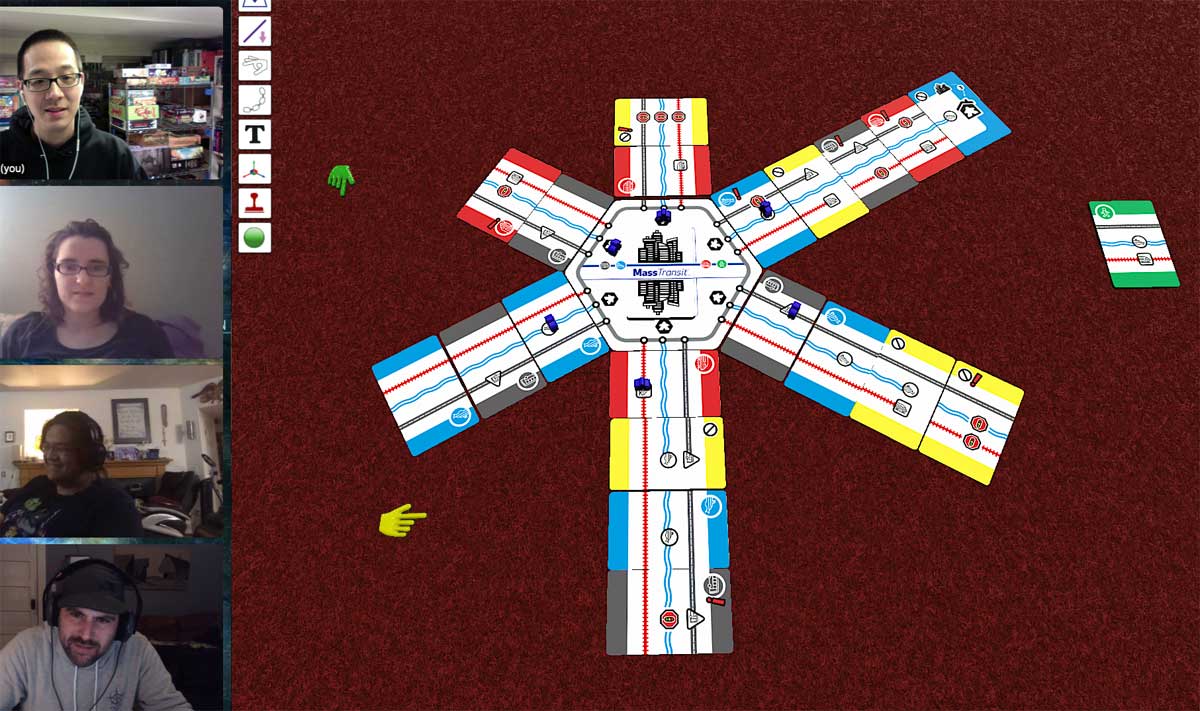
I played the physical prototype with my daughter and as a solo game. The solo rules are basically the same as the regular game—you don’t have any issues with communication, but the challenge is that your four cards are the entire pool, so you’re often forced to play things you don’t want to. But as with most games these days, I did some of my playthroughs on Tabletop Simulator, too. (Note: if you’re playing on Tabletop Simulator, click the button at the top right next to the weightlifter icon until it says 30° so that you can rotate cards to match the angles of the routes. If you have it at 90° you’ll be limited to the two vertical routes.)
So far, I’ve only won Mass Transit a couple of times, but I’ve gotten very close many times. The one thing that’s hard for me to know for certain is how much the game depends on the luck of the draw. It seems to me that it’s possible for the cards to be stacked in a way where it’s impossible to win—for instance, if one player ends up with 3 suburbs after their first turn, they no longer get to mulligan and draw again, but it may mean they can’t play two cards on the next turn because none of the routes are long enough to play it yet. When we lose, it’s hard to know if it would have made a difference if some of the players had played more cards on their turns—or fewer. On the other hand, it’s a very short game—so even if it were true that my particular setup was impossible from the start, it doesn’t feel like an insurmountable issue, because I can just shuffle up the cards and try again. I’ve definitely had fun playing it regardless, even as I pondered the question.
It’s a fun, light cooperative game with a nice theme—though admittedly the idea of taking mass transit may be quite a bit more stressful during the pandemic than in normal times. I highly recommend the use of minifigs to enhance the theme—my 7-year-old has been playing some Mass Transit on her own, too, because she liked setting it up and sending the Avengers home.
For more information or to make a pledge for Mass Transit or the other two titles, visit the Calliope Game Night Extravaganza Kickstarter page! There are only a few days left in the campaign, so check it out soon!
Click here to see all our tabletop game reviews.
![]() To subscribe to GeekDad’s tabletop gaming coverage, please copy this link and add it to your RSS reader.
To subscribe to GeekDad’s tabletop gaming coverage, please copy this link and add it to your RSS reader.
Disclosure: GeekDad received a copy of this game for review purposes.
